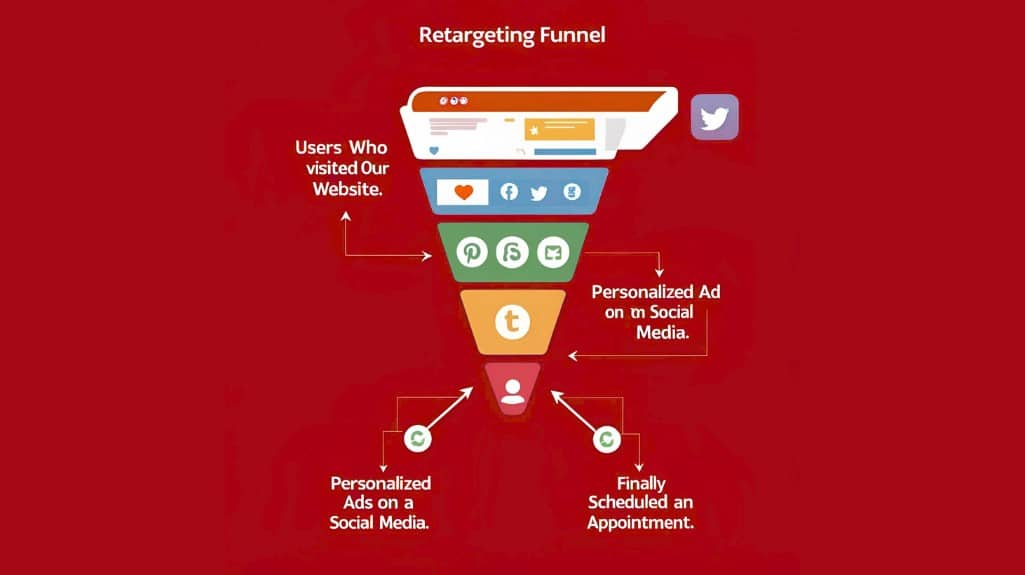Why retargeting and not just new traffic?
96 % of visitors leave your site without converting. Attracting new traffic is expensive and often irrelevant. Retargeting allows you to "chase" those who already know your practice, reminding them of your offer and dispelling doubts. In medicine, where trust is key, this second or third exposure can make the difference between a click and an appointment.
Step 1: Define your retargeting audience
- Critical landing page visitors
- High value treatments (plastic surgery, fertility, cardiology).
- Users who stayed more than 30 seconds or viewed more than 50 % of the page.
- Blog visitors and resources
- Readers of specific articles (e.g. "Is egg donation worthwhile in Mexico?").
- Guide or e-book downloaders.
- Users who started the form but did not complete it
- Tag with a "form abandonment" event in Google Tag Manager.
- Previous customers for cross-sell and loyalty
- Patients who have scheduled a service; offer them follow-up check-ups or complementary treatments.
Step 2: Segment the message
Each group should receive a separate announcement:
- Landing abandoned: "You finished your IVF application. Complete your registration and receive a free consultation."
- Blog reader: "We saw that you read our stem cells guide - would you like a video call to answer your questions?"
- Form abandoned: "Your evaluation is almost ready. We just need to confirm one piece of information to schedule your appointment."
- Previous patients: "Thank you for choosing us - ready for your exclusive discounted annual checkup?"
The copy must respond to the specific objection and offer a clear benefit or incentive.
Step 3: Choose the right channels
- Google Display & YouTube
- Graphic and video ads targeted to users in the display network.
- Use retargeting audiences created in Google Ads from your analytics.
- Facebook & Instagram Ads
- Custom audiences and lookalike based on visits and actions.
- Carousels with testimonials, before/after or success stories.
- Email retargeting
- Email sequences for form-abandonment and expired leads.
- Include direct links to the abandoned landing page and short testimonials.
Step 4: Establish frequency and duration
- Frequency: 3-5 impressions per week to avoid fatigue.
- Duration of the campaign:
- Landing abandoned: 7-14 days after visit.
- Blog and form-abandonment: 14-30 days after interaction.
- Previous patients: quarterly follow-up cycle.
Step 5: Measure and optimize
Key metrics:
- CPL retargeting vs. CPL of new traffic.
- Conversion rate of retargeting audiences.
- Cost per acquisition (CPA) and segment-specific ROI.
- Effective frequencySaturation point identification (when CTR drops and impressions go up).
Optimize weekly:
- Adjust creatives and messages that generate more clicks.
- A/B test of offers: free consultation vs. discount.
- Refine audience size: excludes converts and inactive > 30 days.
Real benefits
- CPL reduction up to 50 % compared to cold traffic.
- Increased conversions from 20 % to 60 % of the retargeted segment.
- Better utilization of hot audience, increasing your overall ROI.
Conclusion
Retargeting is not a luxury: it's the most efficient way to convert the traffic you've already paid for. For medical clinics, where each lead can represent thousands in revenue, a well-targeted and personalized retargeting campaign makes all the difference. At Torres CreativeWe design retargeting funnels that recover up to 40 % of lost visitors, transforming them into engaged patients.
Don't miss out on those who have already shown interest; convert them with precision retargeting.





